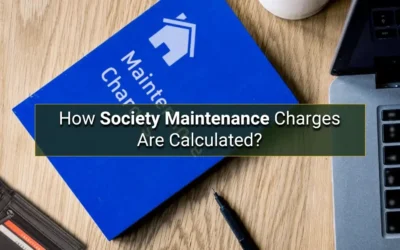Ask a new homeowner if they have received their conveyance deed, and most will give you a blank stare or ask, “What is that?” Ask a real estate lawyer what causes half the property disputes in court? You see the connection there?
It’s more than just another legal formality-it’s the legal foundation that separates confident ownership from future litigation. Under-construction promises, handshake deals with developers, and “soft possession” handovers are all mass chaos, and this single document is the only thing standing between you and a costly mistake. If your name isn’t inked into the land records, ownership is just an illusion.
Let us unpack the meaning, types, format, charges, and consequences of escaping a conveyance deed-as they say in Indian real estate, assumptions cost money, and paperwork saves it.
What is a Conveyance Deed?
The conveyance deed formally states the transfer of title being made from one person (known as the transferor) to another (the transferee). It serves as legal evidence of title and secures the rights of the new owner under the laws of property in India.
In simpler terms, the definition of a conveyance deed can be stated as follows:
A binding contract between two parties where the vendor or transferor conveys or transfers property rights to the vendee or transferee.
“Conveyance,” therefore, embraces every kind of transfer of property-sale, gift, exchange, mortgage, lease, etc.
Types of Conveyance Deed
They are highly variable and never just “one size fits all”. They also differ among themselves in the mode in which the property itself is being transferred.
Sale Deed
Most common. Sale deed is executed when a property is sold and consideration in cash replaces ownership.
Gift Deed
A deed that is applied to transfer real property without consideration or money.
Mortgage Deed
An instrument used to create a mortgage on the property. The property is given as security for a loan, and the lender gains rights over it until the debt is fully repaid.
Lease Deed
An agreement wherein temporary possession is given to a lessee for a fixed period in consideration of the payment of a rent, not ownership.
Exchange Deed
An agreement whereby two owners agree to exchange their respective properties.
Relinquishment Deed
One co-owner ‘relinquishes’ or gives up his legal right in favour of another co-owner.
Deed of Apartment/Society Conveyance
Used by builders to convey the land and building’s ownership to a welfare association or cooperative housing society.
Why is a Conveyance Deed Important?

Now you know the key purposes, which include:
- Providing evidence of ownership to the buyer
- Facilitating the procedure of mutation of property in government records
- Enabling the owner to resell, lease, or mortgage the property.
- They serve to safeguard the buyer’s legal rights in case of future disputes.
Without this document, the buyer may not have a legal claim on the property even after full payment.
Conveyance Deed vs Sale Deed: What’s the Difference?
The two terms are often confused; however, they are different:
| Aspect | Conveyance Deed | Sale Deed |
|---|---|---|
| Definition | A generic term for the transfer of property | Specific transfer of ownership through sale |
| Consideration | May or may not involve money | Always involves a monetary payment |
| Scope | Includes gift, lease, mortgage, etc. | Only sale-based property transfers |
| Type | Umbrella term | Sub-type of conveyance deed |
So, all sale deeds are conveyance deeds, but not all conveyance deeds are sale deeds.
Conveyance Deed vs Registry: Are They the Same?
Moreover, at present, it also contains the frequently asked questions, like conveyance deed versus the registry.
The conveyance deed is simply a document that confirms the transfer.
The Registry, also referred to as Registration, is a process of executing a legal document that is made with the local Sub-Registrar of the Indian Registration Act, 1908.
Both the above processes are instances of going hand in hand. A conveyance deed is only legally valid after its registration.
Also Read: What is Property Card in India? Meaning, Importance & How to Get It Online
Is Conveyance Deed Mandatory in India?
A conveyance deed is needed for all property transactions wherein ownership is transferred. If one is not obtained, the following could be certain:
- The property has no legal title in the absence of it
- Cannot sell, lease, or mortgage
- Risk of ownership disputes
- Difficulty in obtaining a mutation certificate
What Happens If a Conveyance Deed Is Not Registered?
According to the Registration Act, 1908, a transfer of property is not, in law, complete till the deed is registered. This is what can go wrong if the registration is not done:
- The deed is not ever admitted into evidence by any court.
- The buyer gets no legal title.
- Municipal bodies or banks may refuse to recognize property rights of the buyer.
- Subsequent buyers may face title disputes.
- Registration, therefore, is not merely optional but a legal obligation.
How to Register a Conveyance Deed in India: Step-by-Step
Here’s a step-by-step guide to registering a conveyance deed in India:
Step 1: Draft the Deed
A legal practitioner should draft the deed as per the latest format with the relevant clauses.
Step 2: Stamp Duty
Pay the required stamp duty online or physically at the treasury office.
Step 3: Schedule an Appointment
Either go to the sub-registrar office directly or book an appointment slot online, depending on the state portal.
Step 4: Submission of Documents
Submit the deed along with the supporting documents mentioned earlier.
Step 5: Biometric verification
Both parties must be present in person for biometric verification.
Step 6: Registration
The document is entered in the register, and a copy with registration particulars is given to you, duly signed by the parties and digitally signed.
Conveyance Deed Format
Yes, although the deeds may differ slightly from state to state in format, the following essential components will remain:
Title-Conveyance Deed explicitly states.
Details of Parties- Name, age, and address of the buyer and seller.
Description of Property- Boundaries, locality, and area included.
Consideration Amount- The amount agreed upon for sale.
Encumbrance Details-declaration on whether free from legal dues.
Indemnity Clause -Sells confirms rightful ownership.
Signatures- to be signed by both parties and two witnesses.
Date of Execution-The date when the deed is signed and registered.
Who Prepares the Conveyance Deed?
It is usually a legal professional or advocate who prepares the deed on behalf of the buyer or seller. Mostly, in a real estate deal, it is the buyer who makes arrangements for drafting this document, so the seller will have to take the deed and get it stamped based on its correctness before registration in the appropriate government offices.
Documents Required for Conveyance Deed
To effectuate any conveyance deed registration, the given documents have to be submitted along with the application:
- Sale Agreement
- Previous title documents (like the mother deed)
- Building plan approval (if applicable)
- Completion certificate (for constructed property)
- Occupancy certificate
- PAN Card of the buyer and seller
- Aadhaar or address proof
- Stamp Duty and registration fee receipts
- Encumbrance certificate
- Identity proofs and photographs of both parties
These are the important documents for registration.
Conveyance Deed Charges in India
The conveyance deed charges broadly comprise:
Stamp Duty
This varies from state to state, usually at 4 to 7 percent of property value.
Registration Fees
Typically, around 1 percent of the transaction value.
Legal Fees
These are the charges made by advocates or document writers, drafting and due diligence.
In certain states, women and senior citizens enjoy a discount on stamp duty; this encourages them to hold property.
What is the period for a Conveyance Deed?
There isn’t any legally determined span for executing a conveyance deed after the property transaction; however, with good effort, it should be registered within 4 months of the execution. After this, it may attract penalties under the Registration Act.
In case of society or builder to society transfer (which is normal in Maharashtra), the period for execution of conveyance deed is 4 months from the date of the occupancy certificate or as per any local RERA rules.
Wrapping Up
A conveyance deed is more than a mere paper; it is also your legal armour in the real world of real estate. It secures your ownership rights, protects your investment, and ensures compliance with the law. Whether first-time homebuyer, real estate investor, or builder, it pays to know how this document works and what it means.
Ensure you use the accurate format, pay the required charges, and register it in due time so that you may enjoy the unbroken enjoyment of your right over the property.




